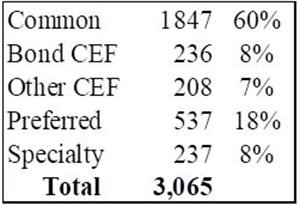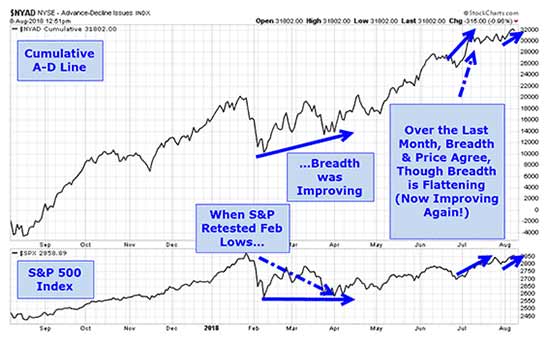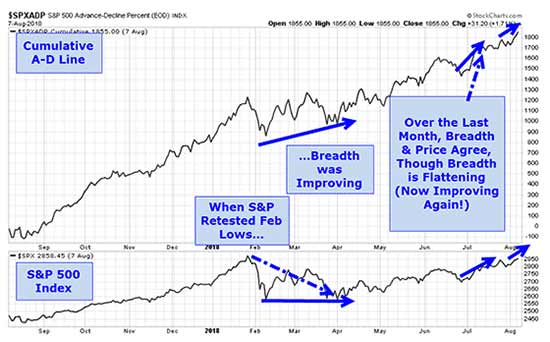I've just returned from an amazing trip to Scotland with my lovely, talented wife and two great friends. We stayed in a beautiful little Strathspey village called Aberlour - population just 970.
The best part: The regional Highland Games were held there during our brief stay. I sent pictures to my Stealth Profits Trader readers - along with an update on some 62% and 93% gainers and other positions that are heading higher right now.
You might know these games date back more than 1,000 years, so they're packed with traditions, including bagpipe and drum corps competitions (majestic) and multiple dancing events (graceful). There are footraces and long jumps where men and women run and jump to the screaming encouragement of the local spectators.
But the great crowd-pleasing allure of the games lies in the strength events, competitions where mountain-sized men in kilts battle it out to see who can throw extremely large objects with the highest accuracy: Heavy stones, massive hammers, and telephone pole--sized logs all fly through the air.
Well, the strength events saw a "ringer" this year. He was a man from outside the region, who easily won the shot put, hammer throw, and heavy weight throws - for both distance and height.
This mammoth of a man was at least 75 pounds heavier than (and twice as thick as) any of the other competitors.
Because of this, it was easy and logical to assume that he would also win the most famous of Highland Game events - the caber toss.
If you've never seen one, "the caber" is a 19-foot, 6-inch tall log that weighs 175 pounds.
Contestants balance the caber vertically in their clasped hands with the narrower end down and then run forward. They finish by tossing the log end over end, hoping to get the smaller end to flip over the thicker end and - this is key - land in a 12 o'clock position in front of them.
The ringer, this he-man of a human being, was first up.
He easily balanced the caber, but as he started running, he lumbered and laboriously made his toss.
Oh, he "turned the caber" all right - he got the smaller end in his hand to rotate over the top of the larger end in the air - but the caber landed at about 10 o'clock.
He might not have realized it, but that cost him the points he needed to win the event. Here's what happened next.
A younger and leaner contestant took his mark. He had more trouble holding the monstrous log. But as he started his run, he was so much lighter on his feet - graceful, even.
After his smooth run, the smaller contestant had more control over his caber, and he made his toss with a nearly perfect 12 o'clock landing.
And so it was that the logical choice, the one that looked best on paper, didn't end up being the one that performed best in reality.
And so it often is when you're trying to get a read on whether the entire stock market is about to choke and fade - or shock everyone to break through to new highs...
[mmpazkzone name="in-story" network="9794" site="307044" id="137008" type="4"]
This Market-Predicting Tool Is Popular, Accurate... and Extremely Controversial
Two weeks ago, I debunked the myth that it's only the tech mega caps that are driving the market.
One of the tools I used in that debunking is one of my favorite market health indicators: the cumulative advance-decline (A-D) line.
Billions Are Now In Play: Millions of Americans could collect "Federal Rent Checks" - to learn how to claim your portion of an $11.1 billion money pool using this backdoor investment, click here now...
Right now, there are multiple technical analysts just like me out there jousting about this very indicator. So as not to take sides, I won't mention them by name.
But here's the essence of the controversy: There is an ongoing debate over whether the New York Stock Exchange A-D line, the most commonly used A-D line, is a valid indicator of market health (or even an "early warning tool" as a divergence meter) because it contains (or is contaminated with, depending on your position) "listed issues," which have ticker symbols but which are not actually operating companies.
 According to this reasoning, the traditional NYSE A-D line has so many interest rate--sensitive symbols that it doesn't give a clear picture of the "stock" market breadth.
According to this reasoning, the traditional NYSE A-D line has so many interest rate--sensitive symbols that it doesn't give a clear picture of the "stock" market breadth.
To be honest, that's a very compelling argument. It makes sense... like thinking the bigger, stronger guy should be able to toss logs farther than the smaller guy.
So let's dig in - to the left here, you'll see the breakdown of the listed issues on the NYSE as of about three weeks ago.
Here's a breakdown of those categories:
- Common: traditional operating companies like, say, Microsoft Corp. (Nasdaq: MSFT) or General Electric Co. (NYSE: GE).
- Bond CEF: closed-end funds (CEFs) that are based on fixed-income instruments.
- Other CEF: other CEFs, many of which are real estate investment trusts (REITs) and are also interest rate--sensitive.
- Preferred: as in, preferred stock. This "flavor" of stock is mostly issued by "common" stock companies, but it can have hybrid characteristics of both an operating company and a fixed-income investment due to typically high dividends.
- Specialty: This category is a catch-all for various unusual items. So things like rights, warrants, structured products, "when issued," and anything else that does not fit into the other categories.
Why are we digging into this arcane make-up of stocks on the New York Stock Exchange? So we can see that basically two-thirds of that total is actually operating companies (if you consider that at least some preferred stocks act a bit like their underlying stocks).
Don't Miss Out: The Treasury is sitting on an $11.1 billion cash pile, and a loophole entitles Americans to a sizable portion. Some are collecting $1,795, $3,000, or $5,000 every month thanks to this powerful investment...
And quite informatively, if we look at the A-D line for operating companies only, it usually doesn't look much different than the NYSE "all-issues" line.
So let's take a look. Here's the traditional "all-issues" version from two weeks ago, brought up to date:
Let's see how that plays out in our current cumulative A-D chart:

In the last two weeks, the S&P 500 has had tiny pullbacks on tariff troubles or concerns over Facebook's earnings report or Turkey's currency crisis, but each time, it has tended to resume its upward climb.
The inescapable conclusion: The A-D line showing that broad market participation continues.
So far, it's looking good for the whole-NYSE school of thought, but we've got more charts to look at to make sure - one that contains an A-D line consisting solely of operating companies.
That'd be the S&P 500, operating companies one and all. Here it is, over the same timeframe.

Honestly, I can't see much of a difference. This chart shows the S&P 500 advance-decline line percentage, which is a mathematical analog (essentially equivalent) for the straight breadth numbers of the NYSE A-D line.
They look almost identical.
Five years ago (yes, this debate has been cordially "raging" for that long) I did a 90-minute webinar centered on this controversy and saw very similar results.
"Federal Rent Checks": Thanks to an obscure law, over 100 government agencies are required to pay rent. By following a simple investment strategy, you could receive checks of up to $1,795 every month. Read more...
Now, to be fair, you can find some differences in the "all-issues" and "operating-only" lines, but to do so, you typically must look at far too short of a time frame. And that's a granularity that I don't think is useful for such a broad-brush (albeit useful) tool.
Most importantly, while it's a blunt instrument, the NYSE A-D line has been very useful for almost six decades in warning about market tops.
In the early 1960s, two of the founding fathers of the stock analysis newsletter business made great calls of a market top independently of each other. Both cited the A-D line as one of the tools they used to make the call.
Interestingly, both were roundly criticized at the time of their calls for using a "contaminated" indicator. Most importantly, both got the call spectacularly right. I'll tell you the whys and hows sometime soon - it's a great story.
But for now, let's realize that the argument about problems with the contaminated A-D line is fine fodder for academics - and actually makes intuitive sense - just like picking the biggest caber thrower does.
But in the real world, the good 'ol fashioned NYSE A-D just keeps working. More importantly, it keeps us on the right side of the long-running bull market.
Millions of Americans Now Entitled to Collect "Federal Rent Checks"
Forty-six years ago, Congress passed an obscure piece of legislation known as Public Law 92-313. And today, it's why the Treasury is sitting on top of an $11.1 billion pile of money.
Fortunately, Americans from coast to coast have discovered a loophole that entitles them to a sizable portion of this cash.
And they're racing to add their names to a special distribution list.
Some are now receiving monthly checks worth $1,795 each. Others are collecting $3,000, $5,000, or more every month. If you want to join them in this powerful investment income stream, you better hurry up.
Because this cash is getting scooped up left and right! Read more...
Follow Money Morning on Facebook, Twitter, and LinkedIn.
About the Author
D.R. Barton, Jr., Technical Trading Specialist for Money Map Press, is a world-renowned authority on technical trading with 25 years of experience. He spent the first part of his career as a chemical engineer with DuPont. During this time, he researched and developed the trading secrets that led to his first successful research service. Thanks to the wealth he was able to create for himself and his followers, D.R. retired early to pursue his passion for investing and showing fellow investors how to build toward financial freedom.



